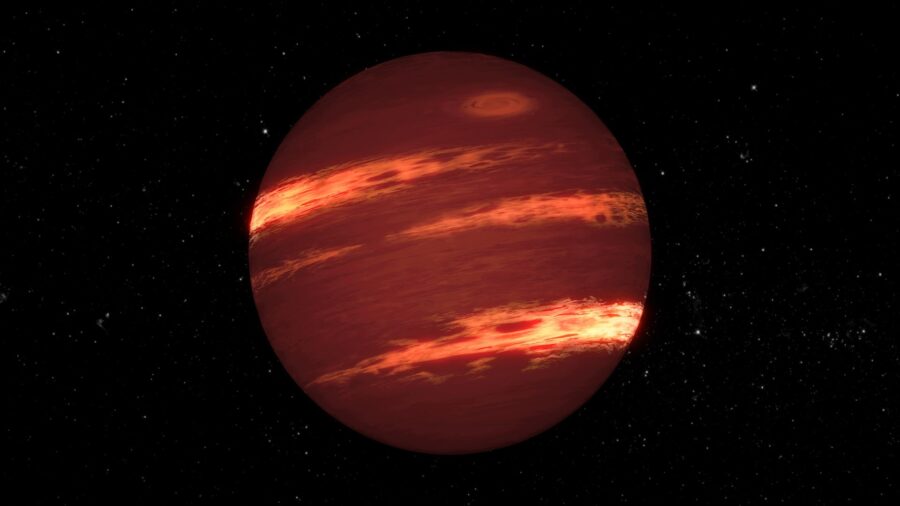James Webb Telescope Discovers Strange Alien Planet
The James Webb Telescope has captured images of a brown dwarf that emits a strange red color.
The James Webb Space Telescope has done it again. The new highly-powered device has been photographing deep space for weeks now, giving the world and astronomers more detailed looks at planets and stars that are far away. Using the JWST NIRSpec and MIRI instruments, the exoplanet was given its best look so far, and scientists have discovered that the planet is shrouded in clouds of sand-like silicate grains. The planet was initially discovered in 2016, but now we have been given a far more detailed look at it. It is known as VHS 1256 b and exists 72 light-years away in the constellation Corvus.
The alien planet known as VHS 1256 b is what is referred to as a “brown dwarf.” This is given to planets that are not big enough to ignite into the stars but are far too big to be considered a normal planet. In fact, this planet happens to be 20 times the size of Jupiter. Brown dwarfs don’t burn hydrogen like most other planets, but they do produce their own light and heat by burning deuterium. Astronomers believed that the reddish glow of the planet was because of the atmosphere, which has now been determined to be wild and turbulent, as various gases change on the planet. Astronomers have discovered water, methane, carbon monoxide, carbon dioxide, sodium, and potassium all on the planet’s atmosphere.

It is strange how many stars, planets, and galaxies are now being detailed by the power of the James Webb Space Telescope. Astronomers have been studying this VHS 1256 b since its discovery in 2016, and most have determined that theories about the planet’s atmosphere are quite close to what had already been gathered. According to Brittany Miles, an astronomer at the University of California, Irvine, and lead researcher for the project, “We will know more from iterations on the data reduction. So far, it looks pretty similar to theoretical expectations.” Strangely, data gathered has determined that the VHS 1256 b is quite small for a brown dwarf. It also rotates 360 degrees around the sun, which is an oval shape and takes some 17,000 years to complete.
This new alien planet is currently being studied further, and a new paper is being written about its findings. A preliminary statement about findings made by the James Webb Space Telescope is available at arXiv.org. We don’t want anyone to break out their tin foil hats just yet, but it is exciting to think about the possibility of astronomers finding livable planets in deeper space. Even more so, finding evidence of otherworldly life in the cosmos. We know how that sounds, but it is still exciting.
The James Webb Space Telescope has been running now since December of 2021. So far, the telescope has photographed some quite captivating images. Recently it captured Jupiter and showed off the planet’s red spots in more stunning detail. We have seen deep space photographed more clearly, and now this new detailed look at this brown dwarf. We hope that the science community will also keep sharing these images with the public, even if they discover something far more troubling. We certainly deserve to know if there is more life out in deep space.












